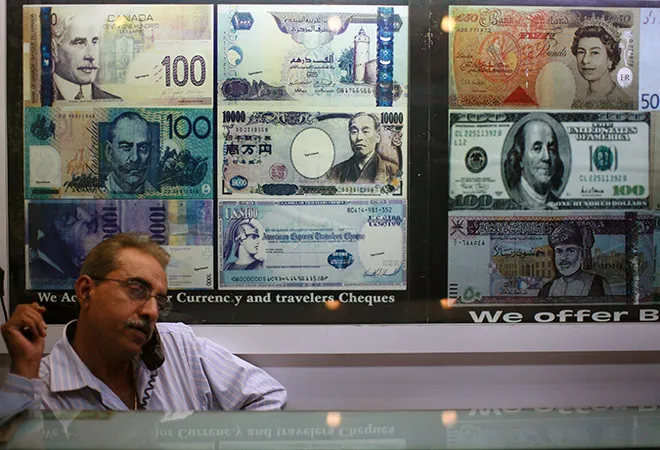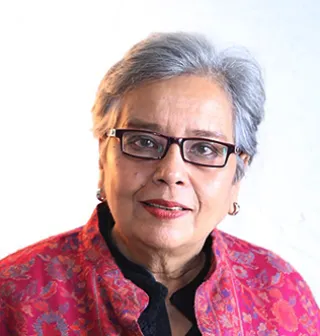
The NDA government seems overenthusiastic about
the $5 trillion economy and India becoming the third largest economy in the world. Even if we take for granted that India will reach $5 trillion economy by 2024, one wonders what kind of society we will have by then. Will all the problems that India is facing resolve themselves seamlessly? Will India have a more equitable and harmonious society? Some of the problems staring in the face are the problems of widening inequality, agricultural stress, high unemployment, low human development record, rotting financial system, environmental degradation, communal strife and low manufacturing growth.
Inequality will greatly increase and there will be
113 billionaires by 2024 from 104 in 2019. Ultra high net worth individuals will reach 10,354 by 2024 from 5,986 in 2019. According to OXFAM, India’s one per cent owns 73 per cent of the wealth. The rich have means to create wealth, as they mostly prefer to invest in equities. The
Economic Survey 2019-20 extols the virtues of wealth creation; everyone knows how vital it is to make a country prosperous and rich. India’s rich have benefited from crony capitalism, and through their connections in power centres, they have accumulated wealth. The Economic Survey condemns it. Many have of course created wealth through hard work and perseverance.
But 50 million people (World Bank Data Lab) in India have no savings and assets, but only there two hands to earn a living. What will happen to them in the new economy? Around 128.5 million rural households are registered under the
MGNREGA scheme. Will they get regular jobs instead of 100 days of paid work? Also the unemployed rural youth have to be given gainful employment so that they are weaned away from drugs — especially in Punjab.
Unless the government’s affordable housing project really takes off, India will not be on par with developed countries regarding its urban infrastructure.
Rural stress cannot be wished away and only if farmers’ incomes double during this period can some relief be expected. Much has to be done to relieve agriculture of its deep-rooted malaise. Rural wages have to rise and rural indebtedness has to be resolved.
Non farm jobs have to increase to give employment to women. Only with higher incomes can rural demand rise.
With modern slum free cities, much needs to be done.
Mumbai, the fifth richest city in the world, is full of slums (41.3 per cent) with a few gleaming towers of steel and glass dotting the skyline. The rich live there and work from there. Most big cities have huge number of slum clusters. Unless the government’s affordable housing project really takes off, India will not be on par with developed countries regarding its urban infrastructure. Investing in cities’ housing is very important at this juncture for attracting investment.
On human development front, we have much to achieve.
India has a rank of 129 out of 189 countries according to Human Development Index (2019). India accounts for 28 per cent of the 1.3 billion multi-dimensional poor in the world. One third of the children are undernourished and half the pregnant women are anemic. The undernourished children grow up to be incapable of handling school curriculum and drop out and remain poor throughout life. Anemic women are susceptible to problems during childbirth. India’s high maternal mortality rate shows it. The government has to have many more welfare schemes for women in order to promote gender equality and empowerment and increase their earning power to reduce the hold of patriarchy. From being the most dangerous country for women, the government should ensure safety for women by spending on lighting the streets and having more police patrolling.
With health and education, more government expenditure is required. All developed countries spend much more on healthcare and education. We spend a miniscule amount of
two per cent of GDP on health and 4.6 per cent on
education. Yet we are the
second largest buyer of weapons in the world. In the whole of EU and Canada, children’s education and healthcare are almost free, leaving people much better off. In India, health expenditure (out of pocket expenditure which is 60 per cent of a patient’s total expenditure) can be so high that it can ruin a family’s wealth and savings with one serious illness in the family.
India has to dispel the impression of becoming a majoritarian state.
There has been a
slowdown in manufacturing growth and exports over the last few years. India needs more FDI to go into manufacturing, but foreign investors have become more discerning. Apart from cheap and skilled labour, less bureaucratic hassle, good infrastructure, they are also looking for clean environment for their officials and families to live in. India’s underinvestment in the environment has led us to be one of the most polluted countries in the world with
15 of the most polluted cities being located in India.
Also,
India generates 1.5 lakh metric tons of daily garbage, with 80 per cent of it remaining exposed and untreated. Open garbage lying strewn across streets of towns and big cities is an ungainly sight putting off tourists and foreign investors. Solid waste disposal is a serious problem in India and it has to be solved before we aim towards a $5 trillion economy. Water pollution is another serious problem. One cannot drink water from the taps without risk, unlike in developed countries.
The financial system is not in order also as the recent
collapse of Yes Bank amply shows. The bigwigs siphoned off crores of public money for their own benefit. There is a serious problem of governance in the banking sector. Lending by public sector banks is still not back to normal.
Last but not least, there should be communal harmony and the government has to support the minority communities fully by spending on their education, training and job creation. India has to dispel the impression of becoming a majoritarian state.
For achieving
the $5 trillion economy, there has to be high economic growth (12 per cent). Whether this can be achieved in the present forecast of a world wide slowdown in trade and output in the face of COVID19 is doubtful and so also the $5 trillion economy.
The views expressed above belong to the author(s). ORF research and analyses now available on Telegram! Click here to access our curated content — blogs, longforms and interviews.
 The NDA government seems overenthusiastic about the $5 trillion economy and India becoming the third largest economy in the world. Even if we take for granted that India will reach $5 trillion economy by 2024, one wonders what kind of society we will have by then. Will all the problems that India is facing resolve themselves seamlessly? Will India have a more equitable and harmonious society? Some of the problems staring in the face are the problems of widening inequality, agricultural stress, high unemployment, low human development record, rotting financial system, environmental degradation, communal strife and low manufacturing growth.
Inequality will greatly increase and there will be 113 billionaires by 2024 from 104 in 2019. Ultra high net worth individuals will reach 10,354 by 2024 from 5,986 in 2019. According to OXFAM, India’s one per cent owns 73 per cent of the wealth. The rich have means to create wealth, as they mostly prefer to invest in equities. The Economic Survey 2019-20 extols the virtues of wealth creation; everyone knows how vital it is to make a country prosperous and rich. India’s rich have benefited from crony capitalism, and through their connections in power centres, they have accumulated wealth. The Economic Survey condemns it. Many have of course created wealth through hard work and perseverance.
But 50 million people (World Bank Data Lab) in India have no savings and assets, but only there two hands to earn a living. What will happen to them in the new economy? Around 128.5 million rural households are registered under the MGNREGA scheme. Will they get regular jobs instead of 100 days of paid work? Also the unemployed rural youth have to be given gainful employment so that they are weaned away from drugs — especially in Punjab.
The NDA government seems overenthusiastic about the $5 trillion economy and India becoming the third largest economy in the world. Even if we take for granted that India will reach $5 trillion economy by 2024, one wonders what kind of society we will have by then. Will all the problems that India is facing resolve themselves seamlessly? Will India have a more equitable and harmonious society? Some of the problems staring in the face are the problems of widening inequality, agricultural stress, high unemployment, low human development record, rotting financial system, environmental degradation, communal strife and low manufacturing growth.
Inequality will greatly increase and there will be 113 billionaires by 2024 from 104 in 2019. Ultra high net worth individuals will reach 10,354 by 2024 from 5,986 in 2019. According to OXFAM, India’s one per cent owns 73 per cent of the wealth. The rich have means to create wealth, as they mostly prefer to invest in equities. The Economic Survey 2019-20 extols the virtues of wealth creation; everyone knows how vital it is to make a country prosperous and rich. India’s rich have benefited from crony capitalism, and through their connections in power centres, they have accumulated wealth. The Economic Survey condemns it. Many have of course created wealth through hard work and perseverance.
But 50 million people (World Bank Data Lab) in India have no savings and assets, but only there two hands to earn a living. What will happen to them in the new economy? Around 128.5 million rural households are registered under the MGNREGA scheme. Will they get regular jobs instead of 100 days of paid work? Also the unemployed rural youth have to be given gainful employment so that they are weaned away from drugs — especially in Punjab.

